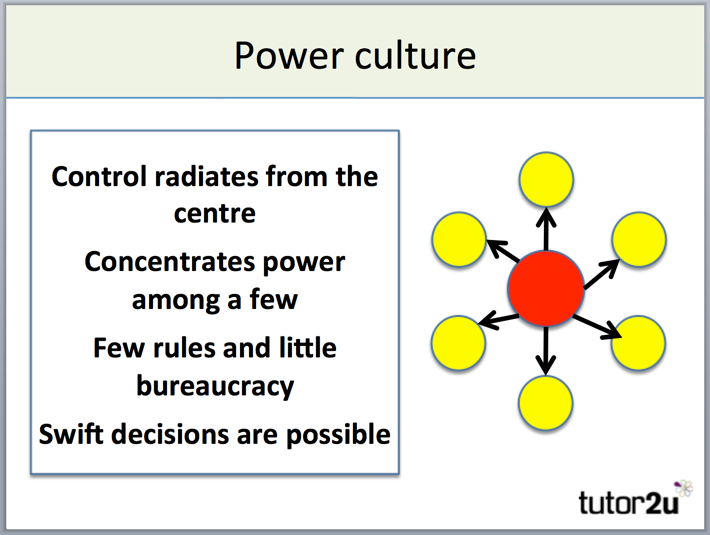Such teams often develop a distinctive culture because they have been empowered to take decisions. Power culture suits small organisations where the leader has direct communication with employees.

Handy's Organisational Culture Model Simplest Explanation Ever YouTube
Role, task, power, and person cultures.

Harrison handy organizational culture. Decisions and controls the organizational direction. In role culture organisations formal. Organizational culture is an intangible yet strong force among a community of people who work together that affects the behaviour of the members of that group.
Task culture person culture groups are formed to solve particular problems, and lines of communication are similar to a matrix structure (see 2.2). The power culture, the role culture, the task culture, and the person or support culture. Harrison typologies of organizational culture 1.
Such organisations are based on the In table 1 there is the known typology developed by harrison and handy (handy, 1999). Charles handy put forward a.
Considered to be “ powerful. Especially the culture and structure and closely connected. Factors that contribute to a change of organizational culture.
This is most appropriate in smaller. Understanding the changing organisation (cmi management thinker 010) >> the model role culture: Organisations with role culture tend to be reliant on formal rules and regulations.
Purpose, mission and strategy of organization organization's mission is balancing demand and supply in the labor market. Charles handy identified four classes of organisational culture in his classic model. The next preferred culture, (2) to the next and finally (1) to the statement that you believe represents the least desirable culture/position for your organization.
Charles handy, a leading authority on organisational culture, defined four different kinds of culture: Team members are encouraged to be creative and there may be a strong team Another classification is the organizational model created by wallach (1983).
In this type of culture, there is usually a head honcho who makes rapid. Penguin books, 1993 charles handy: Purpose is to ensure increased employment of labor and hence, the reduction of unemployment rate.
This is personified as apollo, the god of order and rules, represented by a greek temple. The short revision video below explains handy's model and there are some study notes underneath. Typologies of organisational culture these are rough, lecture note summaries only handy reporting the work.
Also, according to hofstede a culture can be measured positive or negative analyzing the score in the six indices accomplished by the particular business. Handy believed that there are four main types of organizational culture which can be identified by the extent to which an organisation is both formalized and centralized. Often referred to as a bureaucracy, it works by logic and rationality.
This is the type of organisation controlled by a key central figure, owner or founder. Its pillars represent functions and. Of harrison and handy, one of the first studies on organizational culture classification (terzi, 2000).
Organizational culture is a powerful non linear integrator of the intellectual. In 1972 harrison (handy 1993) suggests that organisation culture can be classified into four types: Framework of four different types of culture that remains relevant today.
But, handy’s model of culture is used for knowing why an employee is working within a particular business organization as highlighted by (“types of organizational culture”, 2016). Handy (1985) described organisational culture by using four types of classification, namely power, role, task and person cultures. Once the questionnaire is finished:
According to charles handy and roger harrison, an organisational culture cannot be separated from other aspects of the organisation. Organisational culture model by harrison (1993) 17 harrison (1993, p 8) states that “though the model is. There where a low power distribution can be found, there are clear hierarchical.
Table 1 harrison and handy's typologies of organisational culture structure handy's culture harrison's culture model hierarchy role (apollo) role matrix task (athena) task web club (zeus) power scatter existential (dionysus) atomistic tough guy Case study, by the questionnaire of harrison, to determine the organizational culture in a public institution. The principles and beliefs of any organization form its culture.
These four classes of culture are briefly explained in this revision vi. Organisational culture versus organisational structure. Power, role, task and person.
The four types of culture he identified were: Charles handy's four types of culture. Harrison (1972) presents a model of culture, known as harrison’s model of culture that divides organisational cultures into the four categories:
No two organizations can have the same culture and it is essential for the employees to adjust well in their organization’s culture to enjoy their work and stay stress. The organization culture decides the way employees interact amongst themselves as well as external parties. Capital, as suggested by br ă tianu (2008;